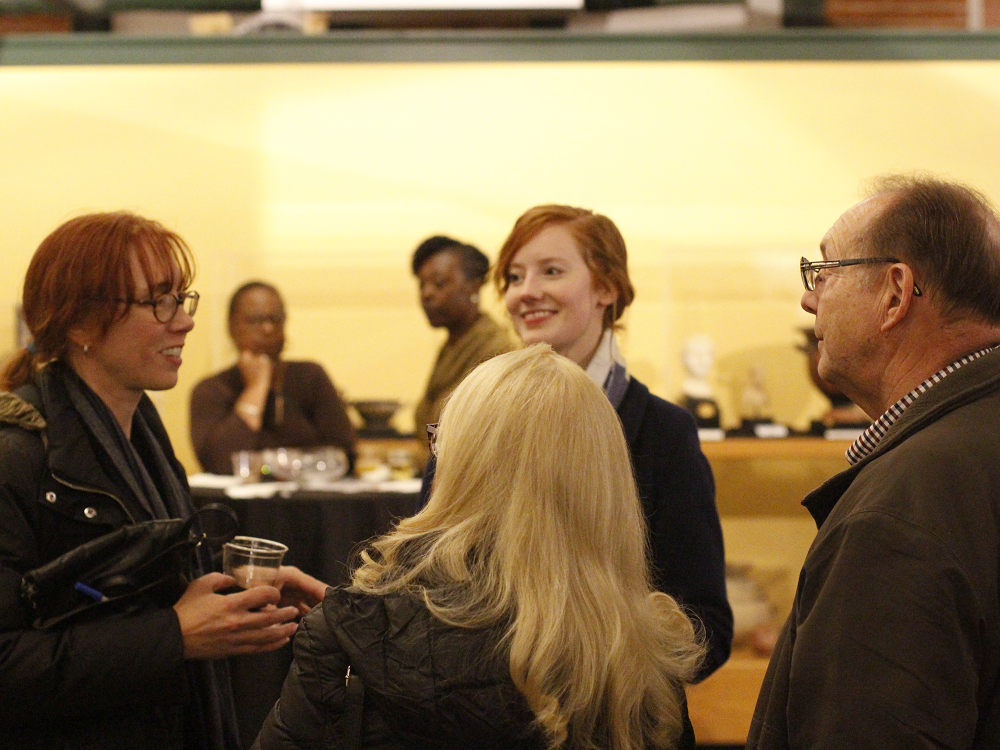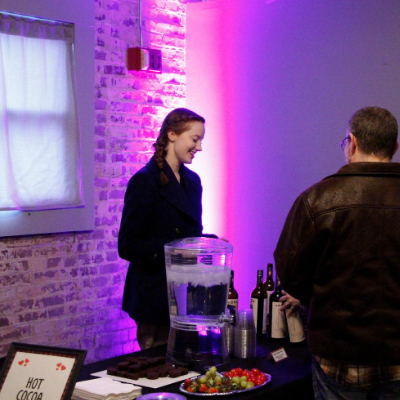Museum as Self-Care Spaces: Part 3
August 14, 2020
 }
}
Many of our arts and culture organizations in the community have suffered greatly due to the COVID-19 pandemic. In certain cities, some humanities organizations may even close their doors for good.
To help showcase the necessity of these establishments, we present this blog series, which features different perspectives of how museums, zoos, and science centers (to name a few) can act as self-care spaces for inspiration, peace, and maybe even a little healing.
----------------------------------------------------------------------
When I was asked to reflect on Museums as self-care spaces, I struggled to pinpoint my one answer. So as any somewhat regular museum-goer does, I decided to go to a Museum. (Luckily for me, my job made my commute to the Museum a matter of sheer seconds – all I had to do was walk down the hall, flick on a light, and BAM. I was in the Romancing the West exhibit.)
I browsed the area for about 7 minutes, and that’s all it took for me to rediscover my four-part answer.
Escapism. When I’m in a state of stress, worry, fear, anger, or anxiety, I tend to defend myself from whatever it is I’m feeling by doing everything in my power to escape from it. Most of the time I clean, re-organize rooms in my home, re-pot my plants, or any other chore that sparks joy (or makes me feel productive). But in addition to these satisfying to-do list items, allowing my mind to get lost in a different time period is one of the best forms of medicine. For me, stepping foot in a Museum is like taking a ride in a time machine. Sometimes I forget how big the world is. I trap myself in a never-ending-overthinking brain loop. But all that internal noise quiets down into nothing when I find myself gazing upon a pre-historic fossil of a T.rex. My worries are cast aside when I allow the reality of the artifact’s story to wash over me.
 The “Awe” Factor. Two years ago, a good friend of mine told me that she finds it extremely important to make sure that she never forgets the "awe" factor. No matter where she works, where she lives, or how old she gets, she will try to always incorporate moments of awe regularly into her life. We tend to gravitate toward a sense of normalcy and routine, but we forget how important it is to switch up our everyday lives with enrichment. Whether it’s going to a concert once a year or vacationing for a few days in a different landscape, I believe it’s important to build situations for ourselves that allow for natural moments of awe to occur. For me, a visit to a museum is an amazing way to experience that same feeling of wonder-filled admiration that we should regularly search for.
The “Awe” Factor. Two years ago, a good friend of mine told me that she finds it extremely important to make sure that she never forgets the "awe" factor. No matter where she works, where she lives, or how old she gets, she will try to always incorporate moments of awe regularly into her life. We tend to gravitate toward a sense of normalcy and routine, but we forget how important it is to switch up our everyday lives with enrichment. Whether it’s going to a concert once a year or vacationing for a few days in a different landscape, I believe it’s important to build situations for ourselves that allow for natural moments of awe to occur. For me, a visit to a museum is an amazing way to experience that same feeling of wonder-filled admiration that we should regularly search for.
Battling self-conscious tendencies. I’ve always been self-conscious about my intelligence. As a fifth grader, I was terrified of getting the answer wrong in my history class, mostly because I was daydreaming and didn’t pay as much attention to discussions as I should have. Now, in 2020, the act of walking through the quiet twists and turns of hallways in a museum grants me not only learning opportunities to expand my knowledge, but the chance to be present with myself, in the quiet… in the history. I can prove that I care about myself by quieting my overthinking mind with education. Plus, the fun facts you discover and the quirky, occasionally bizarre artifacts you find make for great conversation starters.
Museums are a visual learner’s dream. For me, Museums pair my love of reading with cold, hard, in-person evidence of a history once lived. I literally get to stand before history in a way that I simply can’t when reading a textbook at a wooden desk in a classroom. Whether it’s surgical instruments used in ancient Roman times, pre-Hispanic trophies representing human rituals, weapons armed by soldiers in World War II, or a musical instrument played by Beethoven himself — as soon as the reality of the story sets in, I feel connected. I’m reminded of what it means to be human — what it means to pass down a legacy, a physical artifact, or an incredible story that helps tell our full history. It reminds me that I’m not merely an accidental drip of paint on an insignificant canvas, but rather a deliberate addition to a world-wide, history-ridden mural that is continually added to by its traveling artists as time goes by.
Museums will always hold a special place in my heart, and I will continue to be grateful to those who dedicate their lives to sharing, preserving, and presenting important histories. I hope that no matter how much the world changes, we never forget to return to the past for important lessons.
(Photo: Marketing Coordinator Amy Emerson serves wine at the Museum's Drinks & Thinks: For the Love of Chocolate event in February 2020.)
----------------------------------------------------------------------
We've shared a few perspectives, but now we'd love to hear yours. From "way-back-when" class field trips to out-of-town adventures, how have places like museums, zoos, acquariums, and science centers shaped the way you view the world?
Enter your own "Museums as Self-Care" blog submission to make your voice heard!
